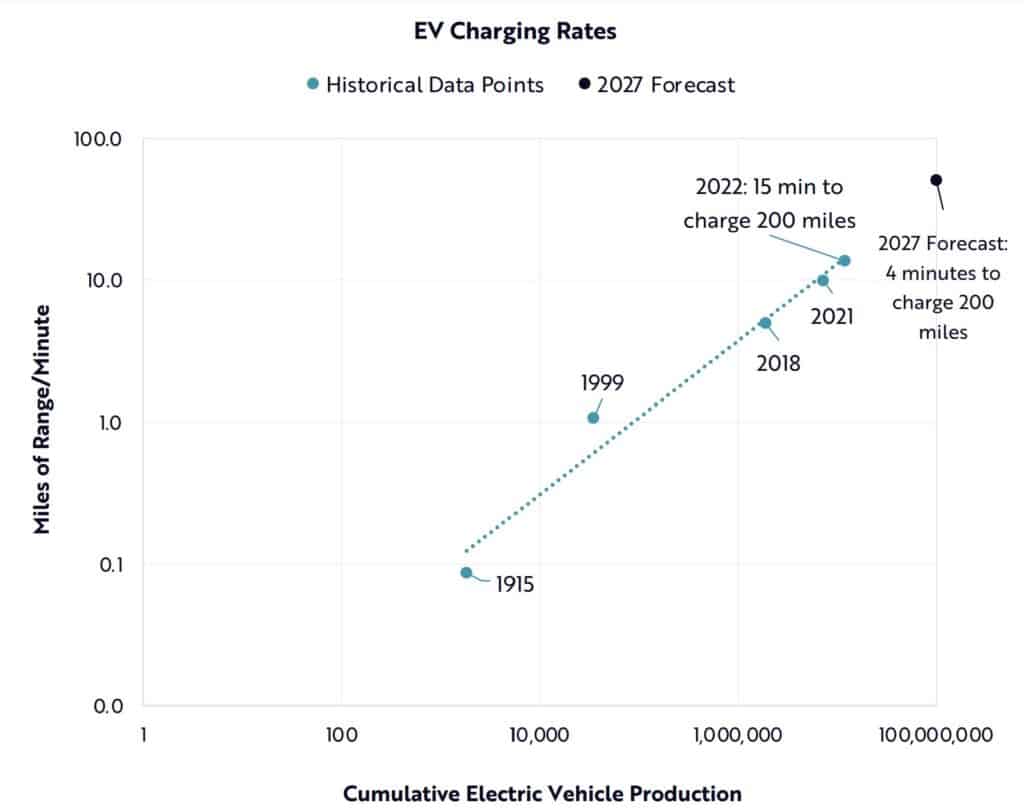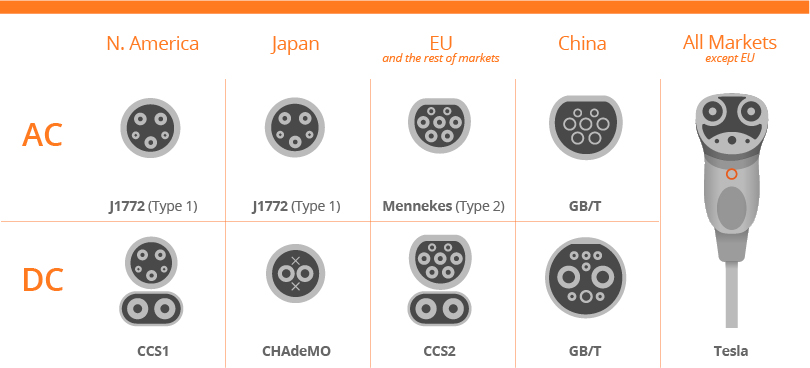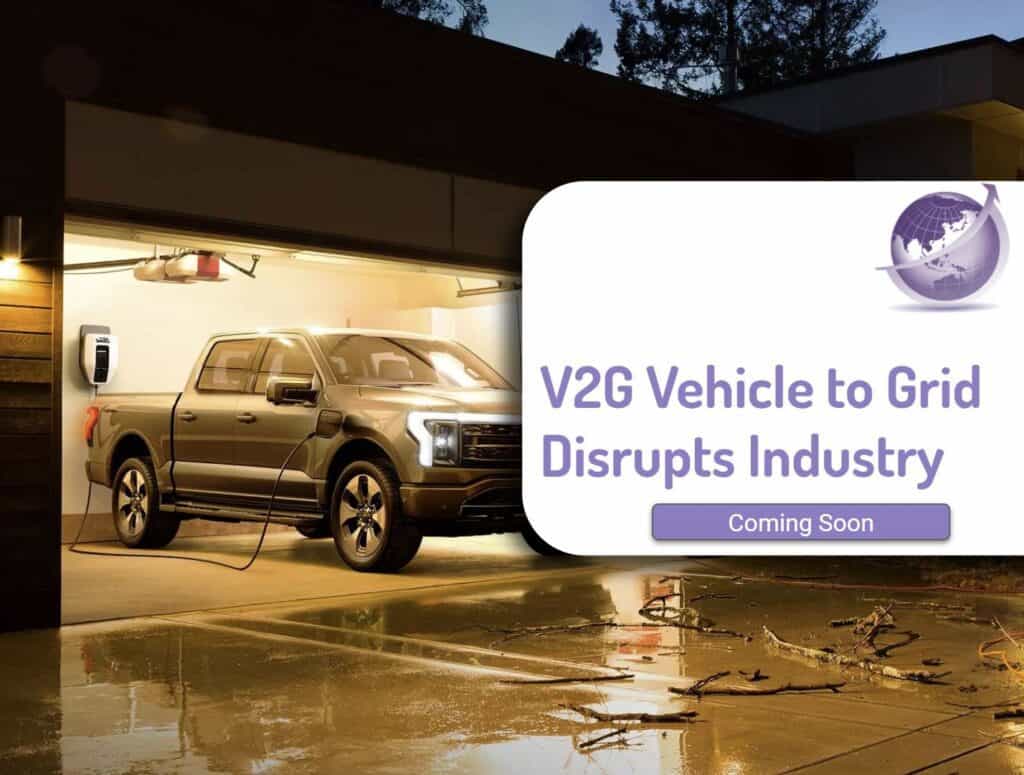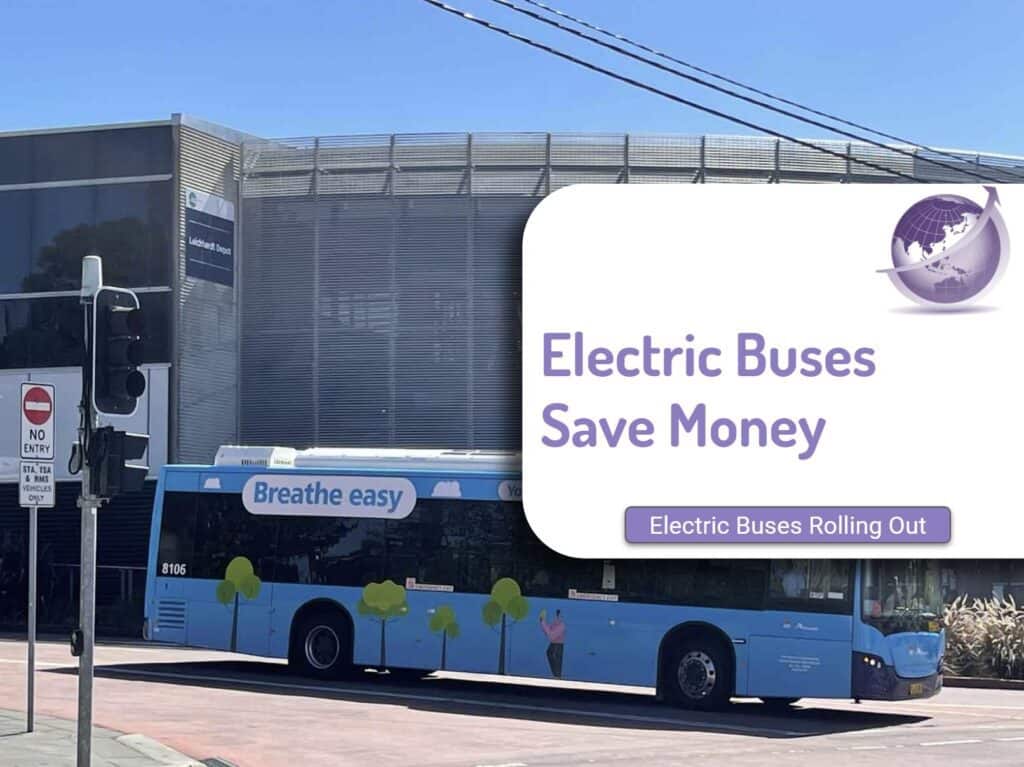Many do not believe that there are more charging stations than gas stations in many countries in the worlds. The number of electric charging stations has ballooned in the past 5 years, primarily through the efforts and investment by Tesla. Tesla has over 4,500 charging locations with over 45,000 connections. (see Twitter @boolusilan. With the rise of EVs both car and pickups over the next 5 years, many, wrongly, think the issue is charging stations. It ignores that all that is needed is an AC power point. It may be slow, but it works.
Cumulative Global Public Charging Connectors

Blomberg in Electric Vehicle Outlook is an annual long-term publication looking at how electrification, shared mobility, autonomous driving and other factors will impact road transport in the coming decades. they discuss how chargers are coming to a power pole near you. While the number of 9 cars per charger globally has not changed much over the past decade, there is a lot of variation. It’s easy to keep pace with EVs when you’re barely selling any. The low numbers

Australian Service Stations Falling
- 25,000 in 1970
- 6,500 in 2017
- 4,000 in 2019
- 3,459 in 2021
In Australia, petrol stations have increased in size, and added groceries, food and beverages. In some countries (eg France, many gas stations are unattended credit card pumps, next to large stores. These service stations will mostly disappear over the next decade.
What Countries with more Charging Stations than Gas Stations?
| Country | Gas Stations | Electric Chargers | Super Chargers (Tesla) | Notes |
|---|---|---|---|---|
| Australia | 3,460 | 3,000 | 53 | Govt pledged A$178 million ($132 million) to ramp up stations (2307 in 2020) says Electric Vehicle Status 2020 |
| USA | 150,000 | 113,600 California 41,300 public and private power outlets. | 908 stations, with 15,000 in 2020 30,000 in 2021 | 113,600 charging outlets for plug-in electric vehicles (EVs). A considerable sum of these chargers is found in California, with almost 41,300 public and private power outlets. Tesla Supercharger Network USA |
| UK | 8,442 | 15,500 stations 42,000 points | 624 (Mar 2021) | Multiple chargers per location. Over 6300 in Europe and adding 100+ locations in UK per year |
| Germany | 14,449 | 28,000 | Growing rapidly. Up 8,000 in just 2 years Statista last 2 year growth | |
| Norway | 1,200 | 17,000 | 3,300 fast chargers | Plugshare Norway |
| New Zealand | 1300 | 280 Chargenet 500 total | 12 | See Plugshare for a full list Leading the Charge |
| Japan | 29,000 declining | 18,270 (160 hydrogen) in 2021 | Charging Stations |
Why The Increase
Charging infrastructure is profitable and future-proof. Chargers are reasonably simple to install. Unlike gas stations, there are minimal regulations and you can install them on private land with minimal additional regulation. You see them in shopping plazas and more recently hotels as they look to add to their services., Major manufacturers, Tritium, Tesla and others need access to high power (but putting in a stationary battery) means the battery can charge during lower energy costs.
Tritium, a Brisbane based fast charging company partnered with Greenlots and Baltimore Gas and Electric (BGE) on a series of charging locations throughout Central Maryland, USA. In Europe in April of this year, Tritium, along with other major players such as BMW AG, Groupe Renault, Stellantis, Volkswagen AG, and Shell, BP and Total, agreed to implement Plug&Charge as standardised by ISO before the second half of this year. Tritium is considered an industry leader with its rapid development of Plug&Charge technology.
BP says fast charging is almost as profitable as petrol. BP is focused specifically on DC fast charging infrastructure (rather than AC charging points) with a plan to have 70,000 points of various types by 2030 (up from 11,000 today).
Faster Charging Following Wrights Law
Ark Invest suggests charging speed by 2027 will be 4 minutes to charge 200 miles.

EV Chargers in India.
The EV market has been growing on the back of a government push in some countries, but now more people also want to move to environmentally friendly modes of transportation, and that’s visible from the demand from hotels, retail, and businesses. Even in India, ElectriVa, a leading EV charging startup recently gained a major contract from the Delhi government authorities to set up EV charging infrastructure at key locations. Electriva expects the share of EVs to reach 8-10% in two wheelers, and over 30% in three-wheelers by 2025. The penetration level in cars and trucks is likely to remain low in the medium term so they are focusing on chargers for all – two, three, and four-wheelers, as well as mobile apps for authentication, payment and operating in simple steps.
Types of Plugs
EV charging connector or plug type standard varies across geographies and models. While there is contention around universal plug technology, there is critical mass from global automakers supporting the Combined Charging System (CCS) in North America and Europe, while Japan and its automakers use CHAdeMO, and China, which has the world’s largest electric vehicle market uses GB/T. Also, depending on the plug type within each region, there are different levels of power available.
The EU has mandated the CCS charging adapter as the standard, and Tesla is opening up its Supercharger network to non Teslas.
The challenge is the software and payment systems across different charging networks. Gas stations have an advantage – same pump, and a credit card. The individual systems will probably migrate over time as it is mostly smart, integrated software.

The Rush to Chargers
Chargers are needed to plug 5 gaps
- Apartment buildings. The apartment managers (Body Corporate) may have rules and regulations to limit charging stations within the building.
- The early chargers had lower power and recharging cars take too long.
- Rural areas – where towns and cities are a long way apart.
- Fleets. Bus, truck and delivery companies will plan to install their own battery / supply and charging infrastructure if vehicles are back to base.
Wireless Charging
Charging cables and adapters are big and bulky. They take up a lot of space and tend to pick up dirt and grime when in use, particularly if it is raining or snowing. We don’t carry gasoline hoses around with us. Why should we carry a charging cable everywhere we go?
WiTricity
Wireless charging technology is worth watching. Check out CleanTechnica’s article in 2018 on the 5 myths of Wireless charging with Alex Gruzen, the CEO of WiTricity. There are now other companies including Plugless Power which sells a home wireless kit for $3,500.
- Myth 1. Wireless charging is slow and inefficient
- Myth 2. Wireless Charging Is Not User Friendly
- Myth 3. Wireless Charging Can Leave You Short Of Battery Power
- Myth 4: There Are No Universal Wireless Charging Standards. J2954 Wireless Charging Standard by the SAE
- Myth 5: Wireless Charging Detracts From The EV Revolution

No car actually comes with wireless charging today (except BMW 530e), so the tech will need a retrofit. The first maybe will be the 2022 Genesis GV60, having wireless-charging hardware fitted, but only for the Korean market, for the time being at least. Genesis claims the SUV’s 77.4kWh battery can be charged to full in six hours, as opposed to 10 hours from a conventional wall charger.
The most exciting tech is safe wireless charging while driving. It means you don’t have to stop your EV to charge, let alone get out of it. This is achieved by embedding inductive chargers inside the road the EV drives on, with the extremely futuristic tech currently being trialled in places like the US, Israel and Norway.
Wireless Advanced Vehicle Electrification (WAVE)
Wave started in 2012, and was acquired by Ideanomics in early 2022 and focused on extending commercial EV range with high-power wireless charging. Without cables, they claim near 100% uptime with no moving parts, nothing to break or freeze. Their systems range from 125kW to 500kW and higher. Their market of high-power systems are for powering electric vehicles for mass transit, warehouse and distribution centers, shuttle services, seaports.
Chargers in China
A number of manufacturers have taken alternative approaches. Some have gone for swapping batteries. The Tesla charging network in mainland China (From Twitter @JayinShanghai)
- More than 1,100 Supercharger Stations
- More than 8,400 Supercharging Stalls
- More than 700 destination charging stations
- More than 1,800 destination charging stalls
- Covering more than 360+ cities and regions
What is the Cost
Texas USA just put out a tender for charging networks. The program, called Texas Volkswagen Environmental Mitigation Program (TxVEMP) is using settlement money from VW’s Dieselgate debacle to fund the projects. The state was to pay 70% up to $150,000. Funding covered 170 chargers at 41 different locations. Here are the quotes from those unsuccessful from EV Insiders
- Chargepoint: $150K+ for 2-plex
- EVgo: $150K+ for pair, $126K for 4-plex
- Circle-K: $75K for 4-plex to $150K+ for 2-plex
- 7-11: $126K for 2-plex
- “Retail EV Charging North/South Texas” (Buc-ee’s) $100K/charger for 6-plex
- Various small players: $75K to $150K, averaging at least $133K/charger
- Accepted applications so far from various players average $123K+/charger
- Tesla: $29K for 17-plex, $42K for 9-plex
Manufacturers of Charging Stations
There are many charging models. Some include
- The EVOS Fleet Home 22 AC wallbox charger costs $2200, and can be installed with single- or three-phase connections. In the case of the latter, it can deliver up to 22kW of power – which would add roughly 120km range per hour to a typical EV. EVOS says a key USP is its patented ‘Energy Management Software’, which chooses the ideal idle time for the charger to charge the EV – overnight in non-peak periods or during business hours, for example. It can also control charge rate, speed and power. EVOS is an Australia manufacturer from Sunshine Coast, Australia.
- Splitvolt from USA, has a 240 splitter to allow cheaper home installation. USA homes are 110V but they often have a dedicated dryer circuit of 240 and this provides an easy installation
- Kempower, from Lahti, Finland, designs, manufactures and commercializes charging solutions and services for electric vehicles and machines operating in the most demanding conditions. They have developed smart charging to reduce the queues at EV chargers and reduce queue anxiety Lahti, Finland. Their systems are all DC, modular and have the smarts to allow multiple cars to change from 1 module optimising battery demand. (Driven.io Podcast)
- ABB announced the official opening of its new DC fast charger production facility in Valdarno, Italy, which is also the company’s largest. It can produce 10,000 units a year. (InsiderEV) ABB says their global output has now more than doubled over the last two years.








